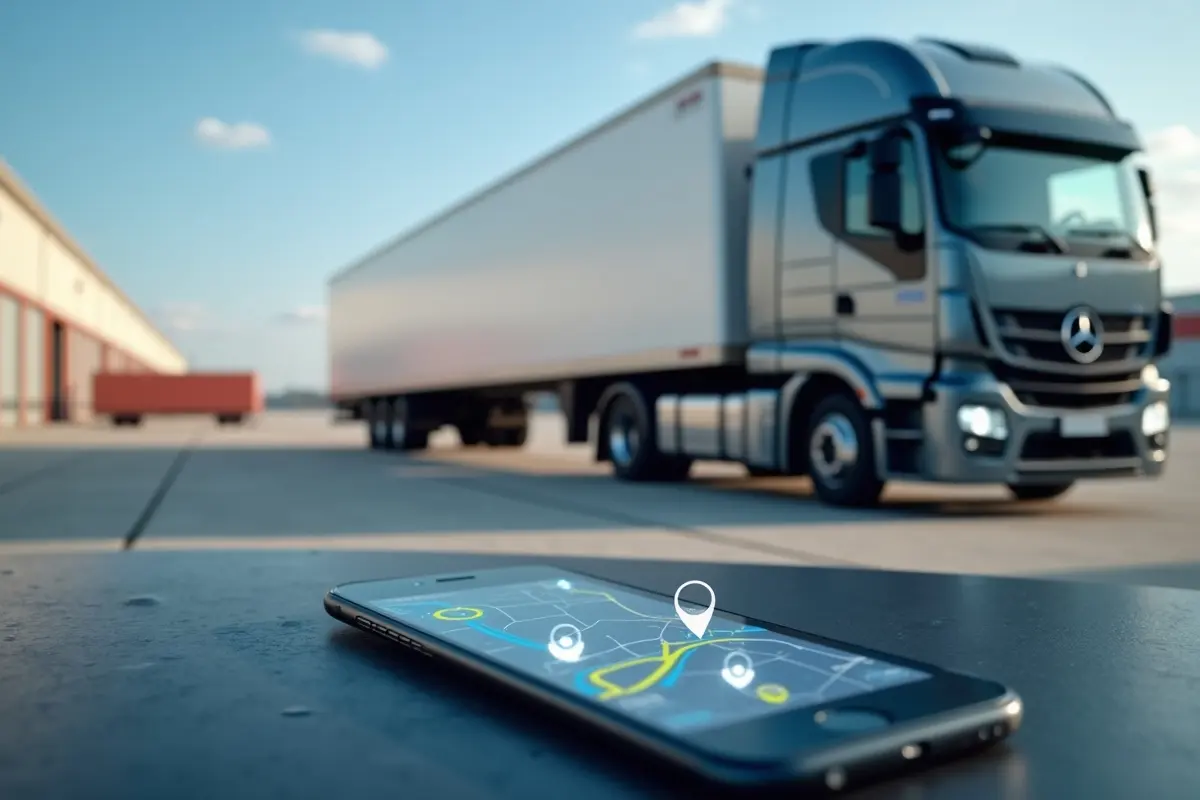In the dynamic and demanding logistics environment, efficient truck dispatching is a cornerstone of success. Companies striving to maintain a competitive edge need not only speed but also accuracy and adaptability. Traditional dispatching methods are often riddled with manual errors, communication gaps, and escalating costs.
By leveraging advanced technology, these industry challenges are transformed into engines for growth and innovation. Among the rising trends are advanced AI dispatch software solutions, which play a pivotal role in sculpting the future of freight management.
Embracing modern, tech-driven approaches to dispatching leads to greater agility, fewer mistakes, and reduced operational expenses. Companies with cutting-edge systems enjoy superior visibility, enhanced driver satisfaction, and better customer service. The shift to digital and automated processes not only streamlines the workflow but also minimizes risk and maximizes efficiency across the board.
The Need for Modern Dispatch Solutions
Legacy methods in dispatching struggle to keep up with the logistical demands and complexity presented by the modern supply chain. Manual processes, such as phone calls and spreadsheets, present risks of miscommunication, inefficient route planning, and inaccurate ETA predictions. As customer expectations grow and delivery windows become tighter, companies must deploy responsive and robust systems capable of handling complex, multi-stop routes and making on-the-fly adjustments.
Modern dispatch systems address these obstacles directly by incorporating automation and real-time data into the process. Automated route planning, live status checks, and instant adjustments ensure that shipments are dispatched with maximum efficiency and dependability. These upgrades are crucial for minimizing delays, optimizing asset utilization, and boosting overall reliability.
Integrating AI in Dispatch Operations
Artificial Intelligence is fundamentally transforming how trucking companies approach dispatching and operations. By analyzing vast datasets—comprising traffic flows, driver availability, weather conditions, and historical patterns—AI-powered software can make recommendations that optimize routing, reduce costs, and enhance service levels. For example, predictive analytics allow companies to anticipate maintenance requirements, thereby reducing the risk of sudden breakdowns or costly delays.
Not only does AI offer sophisticated routing, but it also supports proactive decision-making. By dynamically adjusting dispatch plans in real time, AI helps logistics professionals stay ahead of disruptions, improving dependability and customer satisfaction. According to Forbes Technology Council, companies using AI-driven solutions report measurable gains in operational efficiency and cost control.
Real-Time Data and Telematics
Telematics technology provides a transparent window into fleet operations. By gathering and transmitting real-time vehicle performance data and driver behavior analytics, telematics solutions empower dispatchers and fleet managers to make quick, data-driven decisions. Critical insights such as fuel usage, engine hours, and route adherence enable proactive compliance and risk management.
Real-time tracking also enhances accountability and safety, enabling a rapid response in the event of emergencies or unexpected route changes. Furthermore, telematics-driven insights can reveal patterns that, when addressed, lead to improved driver performance and fewer accidents. As telematics become more well-integrated with dispatching systems, they unlock greater efficiency and provide a robust foundation for continuous improvement initiatives.
Digital Dispatching Platforms
Digital platforms replace cumbersome physical paperwork and phone tag with seamless automation and instant communication. Comprehensive dispatching platforms integrate scheduling, tracking, invoicing, and communication into a unified dashboard. Features such as real-time updates and automated alerts reduce the risk of costly errors, enabling dispatchers to monitor fleet status and make rapid course corrections easily.
Through digitalization, companies achieve greater transparency and accuracy, which in turn elevates driver morale and customer confidence. Platforms with intuitive mobile apps empower drivers with all the information they need at their fingertips—improving response rates and reducing downtime.
Enhancing Driver Communication
Clear, consistent communication is vital in truck dispatch operations. Modern dispatch systems leverage in-app messaging, automated reminders, and GPS-enabled notifications to keep drivers and dispatchers aligned. These tools keep all parties updated on schedule changes, delays, or urgent instructions, eliminating the confusion and lag time inherent in older methods.
Mobile communication platforms support not just efficiency, but also safety and regulatory compliance. Automated safety alerts and two-way communication reduce misunderstandings, foster trust between team members, and ensure that critical information is never lost in transmission.
Sustainability in Truck Dispatch
Sustainability is becoming an operational imperative for logistics companies. Cutting emissions and reducing empty miles directly align with both environmental targets and cost savings. AI-powered dispatch systems and real-time data analytics help identify and eliminate inefficiencies, resulting in lower fuel consumption and reduced environmental impact.
Furthermore, the adoption of electric vehicles (EVs) for certain routes and the optimization of dispatch schedules for fewer, fuller loads are innovative strategies being embraced by forward-thinking fleets. These efforts not only help achieve sustainability goals but also meet the rising expectations of consumers and regulators regarding corporate environmental responsibility.
Choosing the Right Dispatch Software
Picking the optimal dispatch software can make or break logistics operations. Ease of use is paramount, preventing costly onboarding hurdles. Integration with existing systems ensures a seamless transition and maximizes returns, while scalability enables growth in tandem with business expansion. Top platforms also offer robust support services to navigate technical challenges and feature enhancements as needs evolve.
A thorough evaluation of features, customer reviews, and vendor support policies can help guide decision-makers to a solution that enhances productivity and stays ahead of industry developments. Taking the time to find the right fit leads to more streamlined operations and consistently superior service levels for clients.
Conclusion
Modernizing truck dispatch with intelligent technologies and digital platforms is essential for thriving in today’s logistics landscape. From AI-based route optimization and telematics to robust communication tools and sustainable practices, every upgrade drives operational excellence. Companies that invest in smart dispatch strategies enhance their efficiency, customer service, and bottom line—positioning themselves as leaders in an evolving industry.




